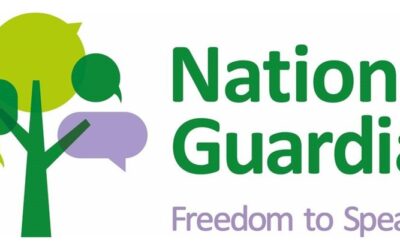Being bullied at work can make you feel like a helpless child. Learn some strategies for empowering your adult self when faced with bullying.
When I was 13 years old I was cornered in a classroom by a teacher who accused me of something I didn’t do. Shouting at me, she hurled insults at my parents and said she would make it her personal mission to ensure I never achieved anything in that school. I just stood there gaping like a goldfish. My head was reeling with the injustice of it all, and my body was shaking with fear. Later I felt full of shame that I hadn’t been able to stand up for myself. I rehearsed all the things I could have said, kicking myself for having frozen to the spot. I swore that when I grew up I’d do better.
Looking back now I know I was a defenceless child who had no chance against an aggressive adult. But there have been many times when, as a grown up, I’ve felt the same way. Frozen to the spot when someone has been cruel to me – even when there’s no shouting involved. Or worse, smiling and nodding as they slyly undermine me. And then berating myself afterwards for being so pathetic and letting them get away with it.
So how do you empower your inner grown-up when you’re made to feel like a child?
7 strategies for responding to bullying at work:
1. Be clear about responsibility
If you are a victim of bullying at work the responsibility for addressing this does not lie with you. Your employer has a legal duty to protect you from bullying and create a safe working environment. Accountability for threatening behaviour lies with the person choosing to act this way. While it is not your responsibility to tackle this behaviour, you can choose how you respond to it. You may decide to take formal action or to do nothing. You may decide to address the issue directly with the person, or you may choose to work through the channels within your organisation.
Any of these actions, including doing nothing, may create further consequences. The person might back off or they may escalate their behaviour. You can’t predict what they will do, but remain clear that their behaviour is not your responsibility. Your primary responsibility needs to be to yourself. Never feel bad if you choose to protect yourself rather than tackle the bullying. You may decide that you need to leave your job. It isn’t right or fair that you should be faced with this decision, but sadly if your employer can not, or will not, protect you this may be the best way to protect yourself. Don’t be trapped by a sense of loyalty to an organisation if this means remaining in harms way.
2. Naming is taming
Something as simple as naming a behaviour can have powerful impact. If you can call out what the other person is doing this immediately creates a sense of accountability. Stick to observable facts about the person’s behaviour – not their intention. Reflect back their own words, rather than your interpretation. For example, if I had been able to say to my teacher “You’re shouting at me”, or “You’re saying my parents raised me badly”, this might have stopped her in her tracks. Of course she may have denied this, but naming the behaviour shifts the power dynamic in that moment. It lets the other person know that you are consciously observing them, rather than being stunned into silence.
There are times when naming a behaviour out loud may feel too dangerous or you may not be able to get the words out. When this happens, naming it to yourself can be just as powerful. This enables you to create some emotional distance from the experience so that it is less threatening. When you feel less threatened the other person has less power over you. When you start to recognise patterns in the bullying behaviour you could even try playing “bullying bingo” – noticing each predictable attempt to control you as it occurs. Bringing humour into this situation can be an empowering move.
3. Develop a catch-phrase
Find a way to communicate that you are not buying into their bullying narrative by having a stock phrase or two that you can use whenever you get that threatened feeling. That way your brain won’t have to do the work when it is in a state of anxiety. For example, you could just say “I’m not sure about that”, or curiously ask “Why do you say that?”, or just say “okay…” in a tone that implies that you really don’t agree. It might not feel like the most eloquent response, but it will register that you’re not buying their story, and create a subtle shift in the dynamic.
4. Change your stance
We communicate more through our bodies than through our words. It can be very difficult to engage a “power pose” when we are feeling threatened, but small changes in our posture or gestures can be equally effective. Notice how your body responds in these situations and think about some small changes you could make to communicate a shift. This could be a different tilt of your head, or where you place your hands. Practice in front of a mirror and notice how these small changes can make you feel different too. Like a catch-phrase, have a practiced stance or gesture that you can use without thinking to communicate that you’re not powerless in the face of bullying behaviour.
5. Harness your anger for others
Sometimes we can be stunned into silence when faced with undermining or humiliating behaviour from others. However, witnessing this happening to other people can activate us. We might find it easier to stand up for other people, than we do for ourselves. If you are being bullied at work, chances are you’re not alone. You may feel able to react more directly when you witness this happening to others. This will not only be hugely appreciated by your colleagues, but will also enable you to communicate a different way of being to those doing the bullying. This is another way of creating a shift in the power dynamic, and breaking the silence that often accompanies bullying cultures.
6. Keep a log
As I explored in the previous blog in this series (Am I over-reacting or am I being bullied in my healthcare job?) keeping a log of the bullying behaviour can be really useful. This can help you to name what is going on, give you some emotional distance, and is a valuable way of collecting evidence should you want to take further action.
7. Be kind to yourself
Don’t become your own bully. It is easy to criticise ourselves for the way we respond in threatening situations, but we need to be kind to ourselves. I will be looking at this in more detail in the next blog of this series – how to cope with the impact of being bullied at work.
Next Steps:
If you think you are being bullied at work and want to speak to someone in confidence about your experiences call the National Bullying Helpline on 0845 2255787. Alternatively, speak to your organisation’s Freedom to Speak Up Guardian. Information on how to contact them should be available via your employer.
If you are struggling with the emotional impact of being bullied at work and want to address this in therapy book a free 20-minute consultation to discuss how I can help.




